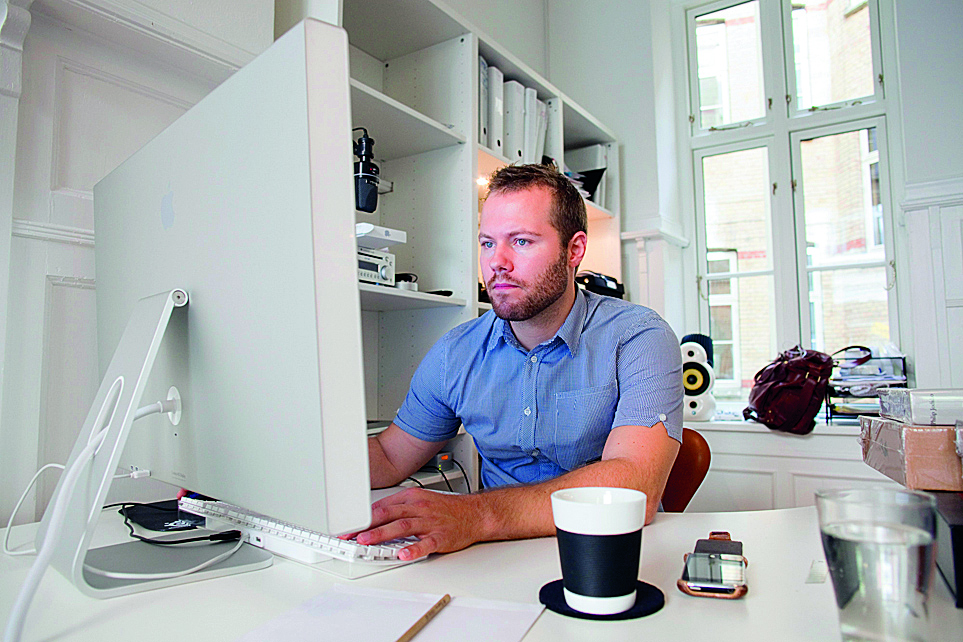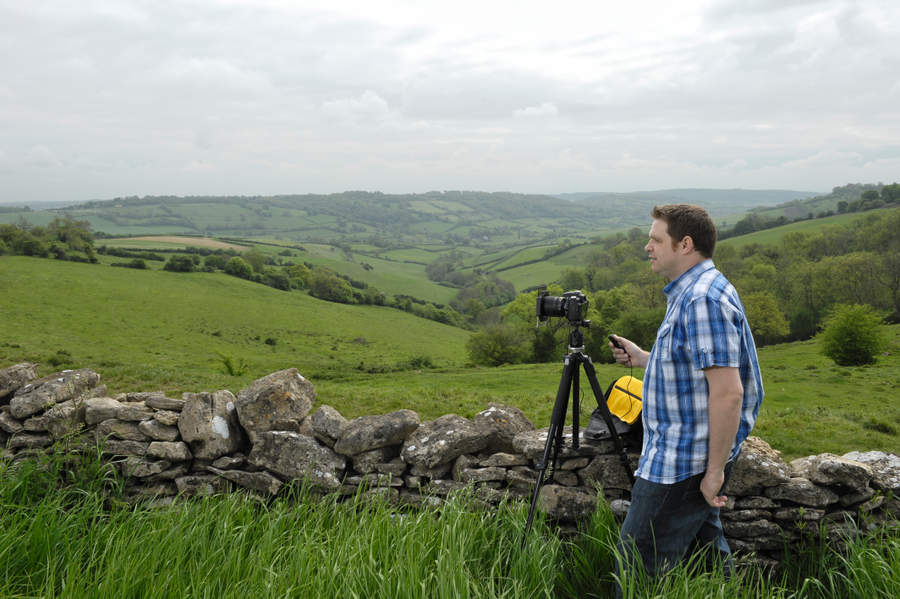How to shoot and sell stock photography: 22 great tips from top pro Yuri Arcurs
Selling stock images is a great way to make cash from your photography. Here are 22 tips to get you started, plus exclusive advice from stock-photo tycoon Yuri Arcurs

With its near-limitless potential for subject matter, selling stock images is without a doubt a quick way to make money from your camera.
But from the millions of images on Flickr’s Creative Commons site to the tens of thousands of daily uploads at more exclusive stock agencies, the global demand for low-cost imagery has made stock photography incredibly competitive.
Here we’ll share some tips for giving your shots the edge, and get some exclusive advice from the prolific Yuri Arcurs, one of the world’s biggest selling microstock photographers.
• The best stock photo sites
Tip 1: Get the classic look

The clothes your subjects wear will date your photos, albeit subtly. Current fashion trends may change in a year’s time, and when a picture editor is looking at your images, they may like what they see but be put off by clothes that date the image.
So if you’re using models, ask them to wear classic styles that don’t show their age – solid colors, blacks and whites, and absolutely no branding or slogans.
Tip 2: Go for multiple interpretations
The images with the longest shelf life are those that are open to multiple interpretations. When Lehman Brothers crashed in 2008, for example, an image of Lehman’s London office shot from a low angle under a brooding sky would have sold quite well; now it’s really dated.
Get the Digital Camera World Newsletter
The best camera deals, reviews, product advice, and unmissable photography news, direct to your inbox!
So rather than literal images, try to shoot suggestive pictures; they’ll sell better over the longer term than a straight interpretation of a very current subject in the news.
Tip 3: Take the thumbnail test

An easy way to tell if your picture’s message is clear enough is to reduce its size. Cut it down to 15% or so, turn your head away, and then look back again. Is the theme still really obvious?
By viewing your image as a thumbnail, you’ll put yourself in the shoes of a picture editor – they tend to be busy, overworked people who simply don’t have the time or inclination to open all your images and pore over them in the way you would. Instead, they’ll scan your shots on a contact sheet, and if they can’t immediately tell what’s going on with the shots, they’re more than likely going to end up in the bin.
Tip 4: Be tech-savvy

Dated technology is as obvious as dated clothes and news stories. Is your business traveller running Windows 2000 on a laptop? Is that lady on the beach talking on a 2004-vintage Nokia 7710 phone or an iPhone 4? Why is she using such an old phone if she can afford such an expensive beach holiday?
With its incredibly short shelf life, technology will instantly put a sell-by date on your image. This isn’t to say that you can’t ever include technology in your pictures; a laptop or telephone is often a great device for expressing communication. But if you’re going to do this, place yourself so the make and model are either not visible or are not an obvious point of interest. Even better, see if you can borrow a more up-to date phone or laptop from a friend.
Tip 5: Fill the frame
You don’t need a high-end DSLR or mirrorless camera to shoot stock photography, but you should have a frame-full of your subject. In other words, leave your wide-angle lens in your bag. Don’t make a person a tiny speck in the distance; they’ll be lost in your composition, and so will the point of your image.
This might be okay if you’re shooting moody landscape shots, but unless you’re very lucky, most people aren’t going to buy your personal photos thousands of times over. If you’re going to use people in your image, it should be clear to the viewer why they are there. People are best used large in the frame to express a mood or concept – check out annual reports and other types of corporate literature.
Tip 6: Go for the emotion

A clear, strong emotion as a dominant theme will enable an image to be used for a number of different scenarios. For example, think of a couple seated at a kitchen table; the woman is frowning; the man has his arms in the air in exasperation. The emotion here is tension, and it’s recognised immediately because you’ve kept the composition simple.
An image like this might be used by a marriage counselling firm in its promotional literature, but it may also be used by a magazine editor looking to illustrate an article about the credit crunch or job losses. Or perhaps it’s being published in a government report on the gender pay gap.
The point is, the general nature of the subject matter means it can be used with anything that requires a sense of tension. That’s why stock images that illustrate emotions tend to be fantastic sellers, because while social norms and political establishments change, the range of human emotions tends to stay the same.
Tip 7: Master one thing

If you think of traditional high-street businesses, the successful retailers usually specialise in one thing, be it shoes, greeting cards, phones… you name it. Similarly, when you’re starting out, you need to find one subject and do it better than everyone else.
As stock-photo tycoon Yuri Arcurs explains: “Becoming a master of a niche is perhaps the real key to success. So many people do the opposite. They look at what I shoot and try to duplicate that, but what they don’t realise is that they’re putting themselves in a line of competition that is so tough, they won’t get many sales.”
You can find niches everywhere, “through special access and knowledge you could do better than pros like me. Your partner could be a psychologist, for instance. Ask what pictures they come across in their work. Mental health problems, for example, make the world feel like it’s falling down. There aren’t many pictures like that out there, so this could be a prime niche to target. The key to selling your pictures is to find something that others haven’t shot.”
Tip 8: Always look on the bright side
A bright picture is attention-grabbing. It radiates energy and a happy mood. So look for white backgrounds and well-lit rooms, or overexpose for a ‘high key’ effect, as with the image above. Remember the thumbnail test? A dark image won’t stand out as well as a brightly lit one.
Tip 9: Be aware of different norms
Remember that not all potential markets for your imagery have the same customs and norms as your home turf. Let’s say you’re shooting a series of images to illustrate rising petrol prices. A tight frame around a hand holding a pump in a car’s petrol tank will obviously have global relevance.
But the moment you show someone driving a car, or even just the interior, you could exclude your image from all those countries where they drive on the right. It’s the little details like this that can make or break a shot’s chances of making you money.
Tip 10: Evoke people power

Did you know that about half of all the stock images sold feature people? People identify with other people, which makes human subjects so much more effective at conveying moods and messages in pictures than inanimate objects. So try setting up a shot with your friend or partner in a situation that might translate globally, such as an angry phone call or a couple arguing. Couples and families are perennially popular subjects for stock photography.
Tip 11: Give yourself some space

Whether you’re shooting a portrait, a still life or a nature scene, it’s wise to shoot a few frames with extra space on the right or left side. This may seem like an unbalanced composition, but to a picture editor or graphic designer it could be a great space for adding a logo or some text.
Images with lots of ‘negative space’ will appeal to retailers, but also to greetings card companies – these are among the biggest and most consistent buyers of stock. think about which situations they might want to produce cards for, and then consider how you might be able to create space in your composition.
Blank walls or monitors are great for this, as are skies and bodies of water. Remember, too, that greetings cards are usually portrait format. That’s not to say landscape-format images are never used on cards, but composing in the portrait format gives you more options.
Tip 12: Be model-savvy
You can only use your friends and family so much, so when choosing a model, you obviously need someone who’s easy on the eye. But you don’t want your subject to be ‘model beautiful’. Try to find someone who’s good looking, but in an everyday girl- or boy-next-door sort of way.
In other words, exceptionally beautiful and stylised people will take the focus away from the message. If the person or scenario doesn’t seem realistic, the viewer might not trust the product or service that’s being illustrated.
Tip 13: Get the right form
Make sure you have a model release form, signed by the model, which gives you permission to use the model’s likeness for commercial purposes. You need this form to protect you, should the model change their mind at a later date.
Stock agencies nearly always insist on them before buying people shots, too. Model release forms vary, but keep the language simple and clear, and make it really obvious to anyone viewing the document what the image is going to be used for. If you’re serious about stock photography, it’s wise to get your model release forms checked over by a legal specialist before you start working with models.
The Royal Photographic Society has a model release form available for download on their website.
Tip 14: Find a good lawyer
As someone who produces a massive volume of images and has booked hundreds of models, top stock shooter Yuri Arcurs warns that you need to be on top of the legal side. One misuse of an image, and a complaint by the model can erase any profits you’ve made from it.
“The best thing to do is work out a flat rate with a lawyer on how to deal with these situations before they ever arise,” he says. “You don’t want to be negotiating a rate with a lawyer when you need their services really badly, because you’re unlikely to get the best deal. Getting that quote in advance not only saves you money long-term, but it helps you to plan these inevitable legal headaches into your budget.”
Arcurs reckons he needs to call on his lawyer to resolve at least one complaint a month. Even though he’s currently selling two million images a year, he’s adamant that a stock photographer just starting off – or even an amateur shooter – should anticipate a legal challenge every couple of years.
Tip 15: Be age aware
When shooting young people, be aware that the age of adulthood varies, often quite significantly, from country to country. Know the legal age of adults wherever you are before you start shooting, and don’t be afraid to ask for proof that your subject is legally an adult. If your subject is still classed as a child, only their legal guardian can sign the model release form.
Tip 16: Mix it up
Try to put yourself in the mind of a picture editor when composing your pictures. Offer a range of points of view and focal lengths. Sure, there are the classic head-and shoulders profiles of people around a boardroom table. But maybe take a few from a lower angle, with the camera on the table. Sometimes art editors want something different, so you can afford to get a bit more creative, but only if you’ve already got the traditional compositions ticked off.
Tip 17: Be a good sport

Sport-themed images are big sellers, but there are a few points to consider. If you want to photograph a football team, why not just approach a local Sunday league team and ask to shoot their next match? You should avoid top-tier sport events, as well as prominent logos (this includes advertising brands and well-known team logos).
Clients won’t use an image that has corporate branding everywhere. Smaller, less well-known team names and logo designs won’t prove as distracting, but they’re still best avoided if possible. Again, put yourself in the buyer’s shoes.
Tip 18: Think 'less is more'
We hear this a lot in photography, but in stock photography, it’s really vital. Your images should be technically superb, but stop short of making them too flashy. too much processing will give your images a slick, fashion-like finish.
This will limit the opportunities for multiple sales because only glossy lifestyle magazines use such pictures – and once one title has used it, no other will touch it.
Tip 19: Keep it real
You can always tell when something is staged. So if you want to sell a picture that evokes the atmosphere and excitement of a live gig, why not find an up-and-coming band and offer to shoot their next concert? The result will be much more natural-looking, and less hassle than trying to shoot well-known bands. Check with stock libraries that you don’t need model release forms, however.
Tip 20: Be creative with nature

Earlier we warned about excessive artiness, but you can flex your creative muscles a bit more with images of the natural world. A literal take on a forest scene produces an opposite effect in advertising: it’s too ambiguous and has been seen innumerable times. If you’re trying to convey a theme of green energy, for instance, you might take a straight shot of a forest scene and then mask in a separate image of an ‘a’ rated fridge in between two trees. think of the natural world as a canvas – a base on which to make illustrative points.
Tip 21: Stay sharp and keep the noise down
When you’re competing with so many other wannabe stock photographers, you need every advantage you can get. So make sure you do the little things exceptionally well. Invest in quality gear and put the time and care into getting everything right in-camera.
Your images must be pin-sharp and noise-free, for this is often the deciding factor between two pictures. A picture editor may find two shots that they like equally, but one may be just a little bit softer, or noisier, than the other, and guess which one they will reject…
Tip 22: Choose the right keywords
You’ve taken your photos, processed them and submitted them to a stock agency, but your work doesn’t end here. People still need to be able to find your shots, and for this to happen you have to make them as visible as possible.
To this end, stock photographers rely on keywords, which they can assign to their images so they turn up in agency customers’ search results. Some photographers go as far as assigning a keyword for every visible object in the frame, but this can sometimes have the reverse effect of annoying both the agency and the picture editors searching for photos.
Generally, you want to keep your keywords below about 20 words, and even that’s a lot. Also, never give your image a keyword that’s a common search phrase, such as ‘romance’, if it doesn’t apply. This will get you reprimanded. Good keywords shouldn’t make assumptions about what could happen in a situation (such as ‘divorce’ on a photo of an arguing couple) but they can be conceptual – for instance, terming a frosty landscape ‘winter’.
Like your composition, keywords should also aim to set your image apart from all the others like it. In other words, if you have a picture of a Texas rancher on horseback waving at the camera, assign it the literal terms stating what it is, but also consider terms like ‘happy cowboy’ which might be a little more unusual.
Finally, when keywording a location, such as the aforementioned Texas rancher, if you know he’s from Laredo, it’s fine to use the keywords ‘Texas’ and ‘Laredo’. But don’t start listing every city you know in Texas. You’ll inevitably run into problems when someone spots the wrong landmarks in the background, or even knows the rancher.
Read more:
• Best website builders for photographers
• How to add copyright and website details to every image you take
The sister print publication to this website, Digital Camera Magazine is Britain's best-selling photography publication – and it can also be purchased outside the United Kingdom as Digital Camera World.
Digital Camera Magazine is packed with more expert advice and more inspirational images than any other title, with the sole aim of helping you become a better photographer. Every issue we also bring you a selection of great gifts which are designed to help you get more from your photography – everything from tips cards and cheat sheets to free software and bookazines.
In addition to inspirational images, interviews, projects, mini tests and tutorials, each issue is packed with news, reviews and comparisons, as well as photographer vs photographer shootouts and head-to-head challenges using the best photo editing software.
The magazine is captained by Editor Niall Hampton.

